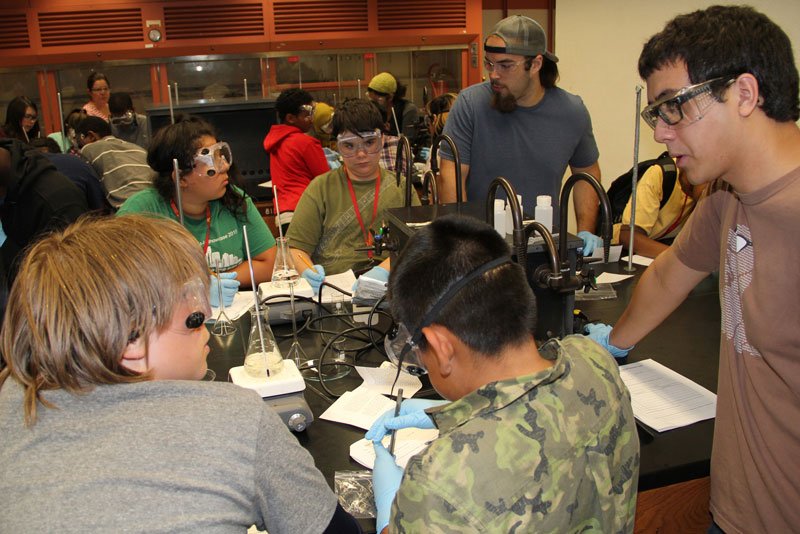CSP/4-H collaboration helps with K-8 curriculm development

The Center for Sustainable Polymers (CSP) is collaborating with 4-H to develop physical science curriculum for young people in Minnesota, California, and New York. Recently, CSP student researchers helped a group of 4-Hers transform a renewable polylactic acid (PLA) cup into a cleaning solution. PLA is a biodegradable polymer derived from cellulosic biomass.
The students, in 6th grade through 8th grade, were members of an Urban 4-H STEM (Science, Technology, Engineering, and Math) Club, which is part of the Extension Center for Youth Development’s Children, Youth, and Families at Risk (CYFAR) project. CYFAR provides young people with opportunities to imagine their future in higher education, and to set and achieve educational goals.
The CYFAR project is funded by a five-year National Institute of Food and Agriculture grant to develop and implement Urban 4-H STEM Clubs that include a campus immersion experience where participants learn about student life, explore academic interests, identify the steps toward college readiness, and meet faculty and students in STEM fields.
This year’s immersion experience included a CSP guided laboratory, where participants conducted hands-on experiments in Department of Chemistry laboratories. Leading the experiments were undergraduates participating in the CSP’s summer research opportunities, along with CSP graduate students, and a post-doctorate associate.
The CSP team included undergraduates Cody Beam, McKenzie Coughlin, Hillis Johnson, Monika Molenda, Susan Pham, Selina Ortiz Piccard, and Zach Swingen, graduate students Grant Fahnhorst, Guilhem De Hoe, Pooja Jambunathan, Annabelle Lee, Alex Mannion and post-doctorate associate Nicholas Ball-Jones.
This summer, CSP students have been working on projects related to polymer chemistry, said Jennifer Henderson, CSP’s director of education, outreach, and diversity. “By participating in outreach education, they’re able to practice communicating their science to audiences of all ages and backgrounds.”
The CSP’s experiments used sustainable polymer activities to work with the students on key scientific concepts like acids and bases, the scientific method, and identifying controls and variables in experiment design. With its 4-H partners, the CSP hopes to develop chemistry and polymer-related curriculum for young people in kindergarten through 8th grade.
“Since 4-H clubs across the country operate with different levels of expertise and availability of specialized equipment, we’re trying to make these activities accessible to anyone,” said Henderson. “By working with groups like the CYFAR youth, we can test out new procedures and modifications. The next step will be converting this lab experiment, so it can be performed outside of a fully-stocked chemistry laboratory.”
Additional photos are available on our Facebook page.
